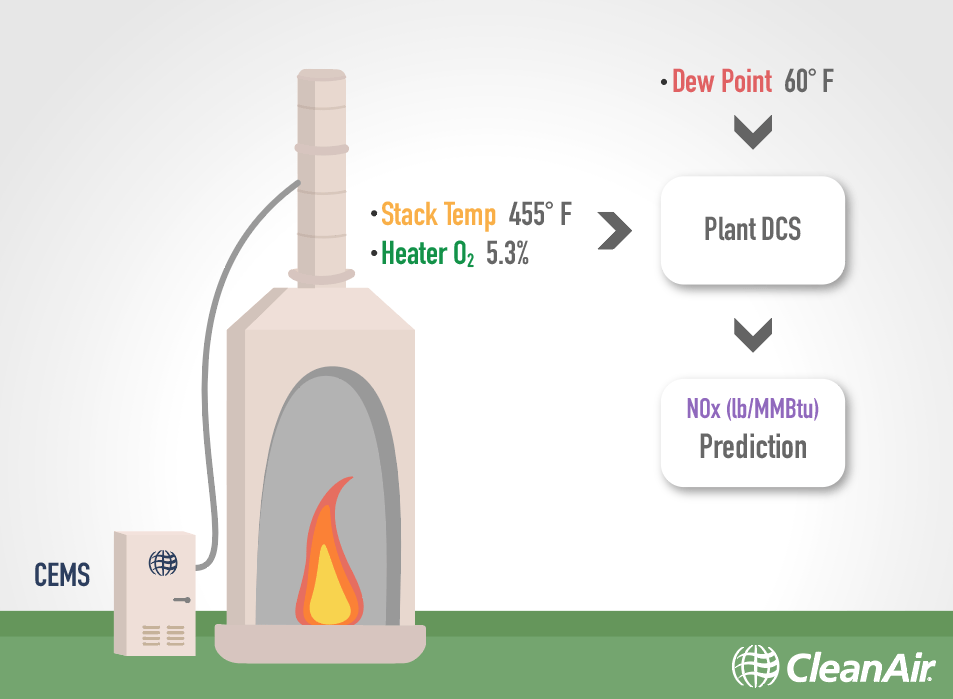What are PEMS?
Predictive Emission Monitoring Systems (PEMS) are models that predict air pollution emissions. They work well for boilers, furnaces, and gas turbines and for common pollutants like NOx, SO2, CO, and CO2.
PEMS require less initial capital than CEMS installations. They also have lower operating and maintenance costs.
Building a PEMS Model
Proof of Concept
Data Analysis and Modeling
Validation Testing
Certification and QA/QC
Building a PEMS Model
Proof of Concept and Validation Testing
The emissions profile of a facility is different depending on how it operates – so building a PEMS model requires collecting emissions data during all normal operating scenarios. The PEMS should be built using data that captures variability in process parameters like excess air, process temperatures, and fuel loads.
Why AutoCEMS?
Having stack testers onsite while you operate at each scenario can get expensive. Once AutoCEMS is set up, After the hardware gets set up, software begins to control your measurements. This removes the need for onsite contractors and reduces the cost of data collection. Data is available in CleanCloud and we are alerted if any quality checks are suspect.
Relative Accuracy Test Audit (RATA) Testing
PS-16 requires a RATA before a PEMS is certified. The exact requirements of this RATA will vary depending on whether or not the PEMS is for continuous compliance or excess emissions. annual RATA to demonstrate the accuracy of the PEMS. It is similar to a CEMS RATA, but requires testing at different process conditions.
Why AutoCEMS?
Again, having stack testers onsite while you operate at each scenario can get expensive. All testing requirements are pre-programmed into software before the AutoCEMS hardware arrives on site. All of the normal benefits of RATA testing with AutoCEMS apply (safer tests, fewer delays, faster reports)
However, AutoCEMS has the additional advantage of being able to immediately switch to continuous collection mode if a RATA fails. So, there is NO downtime and NO extra CEMS mobilization cost to retrain the PEMS algorithm.




